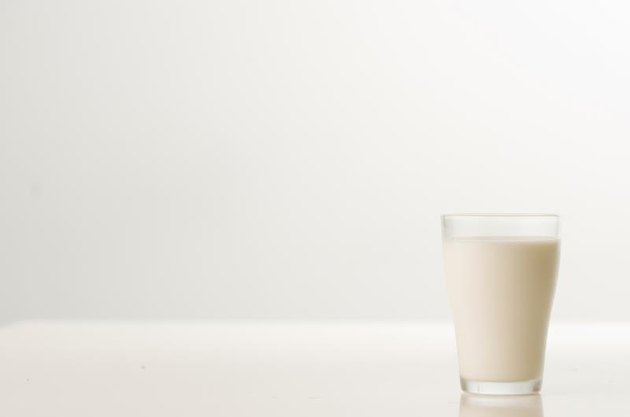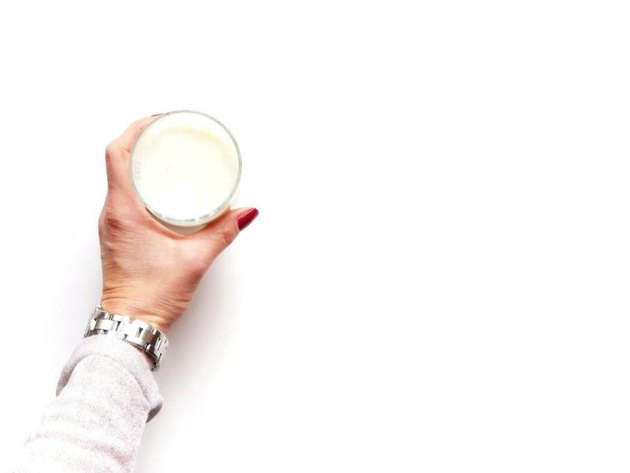If you’re a health-conscious, busy professional with no time to cook and scarcely enough room to eat, then Soylent, the ready-to-drink meal replacement may be for you.

Advertisements
Unlike other liquid meal replacements that help people meet specific nutrition goals (losing weight, for instance, or bulking up in the gym), Soylent is billed as optimal nutrition for everyone.
In fact, Soylent aims to replace the antiquated inconvenience and inefficiency of eating food altogether — period.
Soylent aims to replace the antiquated inconvenience and inefficiency of eating food altogether — period.
TheNutrition Breakdown of Soylent 2.0
Let’s start with the basics: Soylent 2.0 is a ready-to-drink beverage containing a complete set of macro- and micronutrients. Each bottle contains 400 calories and 20 percent of the Daily Value of 25 different vitamins and minerals, so that a full day’s supply of five bottles theoretically provides all that’s needed for a standard 2,000-calorie diet.
So how does the nutrition profile of Soylent stack up against recommendations for a healthful diet? The protein in Soylent is an isolate extracted from soybeans, the carbohydrate comes in part from isomaltulose extracted from beets, and the fat comes primarily from algal oil.
All told, the formula runs lower in carbohydrates and higher in fat than is typically recommended by nutrition guidelines, providing 47 percent of calories from fat, 33 percent from carbohydrate and 20 percent from protein.
Although relatively high in total fat, Soylent contains no trans fats, and a full day’s supply provides about five percent of calories from saturated fat — half the limit of 10 percent recommended by the 2015 Dietary Guidelines for Americans.
In fact, 75 percent of the fat is in the monounsaturated form that nutrition experts recommend Americans should consume in larger amounts in place of saturated and trans fats. Monounsaturated fats protect against heart disease and are associated with many more health benefits.
And the sugar in a day's supply of Soylent comes in at just under 10 percent of calories — the limit now recommended in the Dietary Guidelines.
Finally, Soylent boasts a low glycemic index score of 49. A low glycemic index food or meal is one with a GI score of 55 or less; these foods have a small or moderate impact on blood sugar, preventing the blood sugar spike that results from consuming more rapidly digesting — or high glycemic index — carbs like white bread and fruit juice. A low glycemic index diet is also linked to lower risk of obesity, diabetes and heart disease.
Soylent 2.0 is also vegan, nut-free, lactose-free and is made in the U.S, however, it does contain soy and isn't gluten-free.

Who Actually Drinks Soylent?
Soylent isn't a dietary supplement. The company website says: “Our goal at Soylent is to engineer nutritionally complete food products that are optimized for modern consumers’ lifestyles and budgets.” The product is classified as a food — not a supplement — by the FDA and “is designed for use as a staple meal by all adults.”
Advertisements
There are dozens of news stories and blogs posted online chronicling the experiences of people who consumed nothing but Soylent for a given period of time (commonly a month). The Soylent website provides a page titled “Eating Nothing But Soylent” that says you’re welcome to do so and directs you to the nutrition facts. Indeed, Soylent was born from a desire to cut down on the time and money many people spend accessing healthful and complete nutrition. “Above all,” says the company, “we want to make healthy nutrition easily attainable.”
ButIs Soylent Healthy?
So, is it good for you? Seattle-based health coach and registered dietitian Kerri-Ann Jennings says, “My general take on Soylent is that it’s for people who want ‘optimal nutrition,’ but who don’t particularly enjoy eating — or who don’t feel they have the time for it,” Jennings says. “It delivers more nutrients than you’d find in many other prepackaged convenience foods, which is certainly a boon for people who might otherwise choose fast food.”

Advertisements
Complete nutrition or not, Soylent is, by definition, a processed food. It’s probably safe to say that most nutrition-conscious eaters would give Soylent more health points than a fast-food meal of a burger and fries.
But a purist might argue that eating actual GMO-free soybeans and beets is unquestionably superior to consuming their component nutrients removed from the real-food “package.”
Jennings agrees. “The unpredictability, the variance in real food is probably one of the factors that makes it a superior base for your diet. When we first started discovering vitamins, we thought we’d learned everything there was to know about food. And then we found more vitamins. And phytochemicals. And probiotics and prebiotics. We keep learning about the ‘key’ components of food, so while Soylent is designed based on the latest understanding of what nutrients we need, it might be missing things we don’t even know about yet (and that we get through whole foods).”
Prebiotics are one of the components of “real food” Jennings advises not to throw out when looking for convenient nutrition.
Soylent: The Future of Food?
The notion of getting all nutrients in a super-convenient meal-replacement product isn't new. But are we losing something important when we forsake food?
What about time spent with loved ones over a sit-down meal? The act of cooking dinner, teaching culinary skills or passing on a favorite recipe? Or what about the familiar and time-honored notion of “breaking bread”? What happens to those cultural traditions when our meals are replaced with “optimal nutrition” in a bottle or a pill?
While it’s tempting to say that Soylent is a modern product that, perhaps like smartphones and computers, contributes to increasing social isolation and the growing distance between modern humans and our natural environment, this wouldn’t be a fair assessment. The company ethos (captured in phrases like “Use Less. Do More.”) is that food is inefficient both to produce and consume and doesn’t always translate to optimal human performance.
It’s not simply a “Why bother eating?” philosophy for the harried modern professional that never learned to cook. It’s also a nod to environmentalism. One of Soylent’s main selling points is its relatively sustainable production in a world increasingly aware of its dwindling reserve of natural resources. Amid growing concern over climate change and the role food production plays in this, the makers of Soylent are keen to point out that algae, a prolific and renewable sea organism that requires fewer resources than does production of food on farms, provides 30 percent of the calories in Soylent.
The Soylent Community
Soylent has a neutral flavor, but there are thousands of flavored recipes in the company’s DIY tool, where users are encouraged to make their own versions and share recipes with the community. There you can find old standards like chocolate, vanilla and peanut butter cup as well as recipes with comical titles like “Automaton Fuel” and “Bachelorette Chow.”
The sheer number of contributions is evidence that, as with any trend, jumping on the Soylent train means you’ll have a lot of new friends who share your habit.
What Do YOU Think?
Is Soylent a superior nutrition product? Do you think it’s a suitable replacement for all of your meals or just an improved nutrition supplement? Would you consume all of your meals in a convenient drink if you knew it was nutritionally optimal? Leave a comment below and let us know!
REFERENCES & RESOURCES Soylent website “drink” Soylent website “powder” Muscle Milk FAQ Almased website “How Almased Works”] 2015 Dietary Guidelines for Americans Harvard website “The Truth About Fats” USDA, NHANES Data 2012, Potassium Intake American Diabetes Association, Glycemic Index Harvard website, glycemic index Ambronite website “Buy Now” Soylent website, release notes, 2.0




Comments